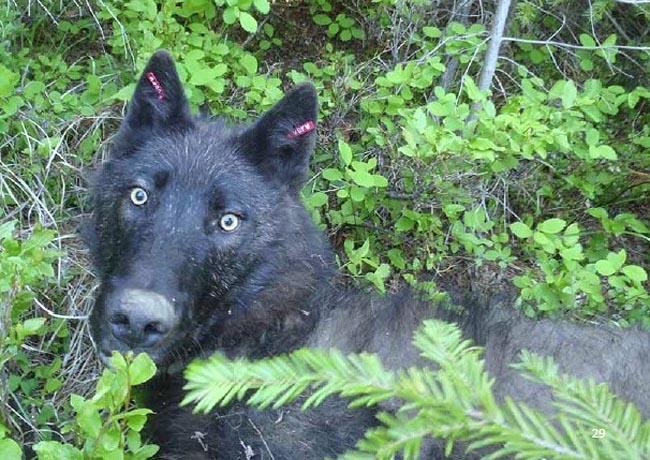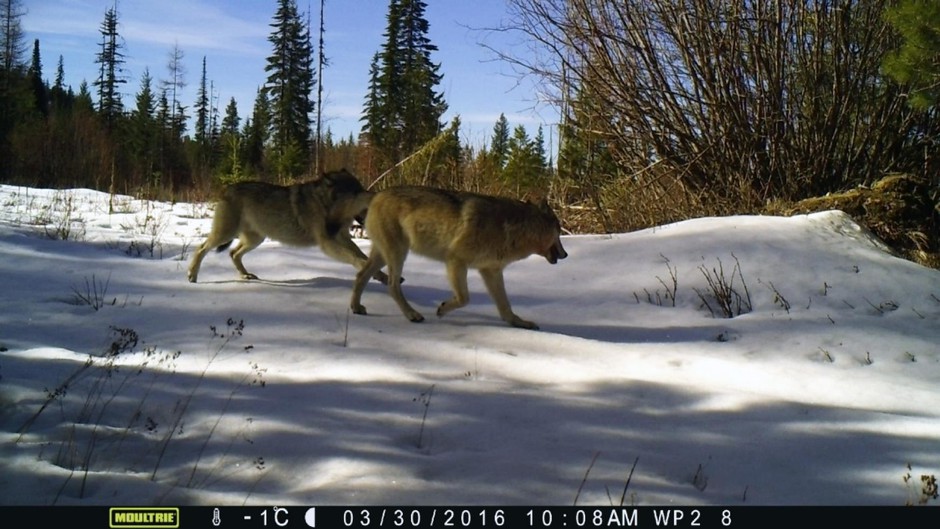
Wildlife Managers Will Kill More Wolves In Northeastern Washington After Livestock Killings
BY NICHOLAS K. GERANIOS / AP
The state of Washington on Tuesday ordered that more endangered wolves be killed in a pack that continued to prey on cattle in Stevens County even after one member was eliminated.
Department of Fish and Wildlife Director Kelly Susewind authorized the removal of one or two wolves from the so-called Wedge pack in response to repeated depredations of cattle on public grazing land.
The agency believes there are currently only two adult wolves in the pack.
The decision was criticized by conservation groups who want the state to stop killing wolves. The state has killed more than 30 wolves since 2012.

Most of the wolves in Washington are in the northeastern part of the state. CREDIT: WA Department of Fish & Wildlife
“We are sickened that the department plans to destroy another wolf pack,” said Amaroq Weiss, a wolf advocate with the Center for Biological Diversity. “Clearly, livestock operators are not effectively monitoring their cattle or taking other proactive measures that would minimize conflicts with wolves.”
Zoe Hanley of Defenders of Wildlife said there is not enough collaboration between ranchers and government agencies in the use of non-lethal methods of preventing wolf attacks.
“Defenders of Wildlife will continue to press for strategies and policies that protect wolves and provide a future for coexistence between wolves and people,″ she said.
Late last month, the agency killed an adult, non-breeding female member of the Wedge wolf pack, hoping that would alter the pack’s behavior. But the remaining members of the pack continued to attack livestock at least twice in the Kettle River range, Susewind said.
The use of non-lethal methods, such as range riders and lights, to prevent the attacks on livestock have not worked in this case, the agency said.
In all, the agency has documented 16 depredation events involving the Wedge pack, including 12 within the last 30 days, resulting in four dead livestock and 19 injured livestock since May 11.

Wolves on a trail camera near Republic, Wash., in Ferry County. Courtesy of University of Washington
The lethal removal of one or two wolves is not expected to harm the wolf population’s ability to reach statewide recovery goals, the agency said.
Wolves were exterminated in Washington by the 1930s, but they began returning to the state from Idaho and British Columbia early this century. Most live in sparsely-populated northeastern Washington state.
There have been repeated conflicts with cattle, leading to the extermination of some wolf packs.
The state has said the wolf population grew to an estimated 145 wolves in 26 packs in 2019. That compared with 126 wolves in 27 packs in 2018.
The U.S. Fish and Wildlife Service ended Endangered Species Act protection for wolves in the eastern third of the state but preserved it for those in the western two-thirds. Under state law, wolves are listed as endangered statewide.
Copyright 2020 Associated Press















